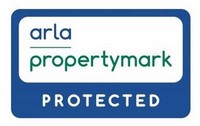Cumbria West Coast Estate and Lettings Agents
Sell, Let or Buy your property with Hunters
From the moment you decide to sell to setting foot into your new home, we’re here every step of the way.
Whether you’re a first-time buyer, a landlord in need of new tenants, or are selling up to downsize, our team can help.
You’ll get the best advice in the industry from our qualified local estate and lettings agents who have years of experience in the property market.
You’ll also benefit from our marketing skills and use of the latest technology, and all this will give you the greatest chance of success when selling or letting your property with our dedicated team.
So, if you need us to take the stress out of selling or letting your property, please get in touch today.
Struggling to get through? Please dial 01228 584249 and one of the team will answer
Our services
- Free online or in-person property valuation.
- Exceptional marketing to help your property stand out. Choose from
- bespoke packages, including professional photography, detailed floor
- plans, videography, and QR codes on lettings and sales boards.
- 24/7 access to your own My Hunters property portal, where you can track
- upcoming viewings and review feedback.
- A range of flexible lettings packages designed to suit landlords. Options
- include securing tenants through to completely managing your property,
- choose which suits you best.
- You only pay our commission when we’ve successfully found you a buyer
- or tenant.
Why Choose Hunters Cumbria West Coast
Regular updates and greater control
Through your My Hunters portal, you can view updates as they happen and easily manage your property details. All this means you’re never in the dark about the progress of your sale or let. Through the portal, you can see upcoming viewings, review feedback, change your property details and stay up to date with offers.
Professional marketing to attract viewers
Your property needs to stand out and draw viewers. With our tailor-made marketing packages, we help you create an ad that turns browsers into buyers. Options include professional photography and videography, virtual tours, details floor plans and QR codes on your signage to attract passers-by.
Reach buyers and tenants looking for a property just like yours
The more people who see your property advert, the quicker it will come off the market. As standard, we list your property on Rightmove, Zoopla, OnTheMarket, and our website too. Eye-catching marketing combined with a big audience means more views.
Flexible lettings packages to suit you
Our range of lettings packages are designed to work around how you want to manage your property.
Whether you just want us to find you a new tenant or need help completely managing your property, we have options for you. Not sure which package is right for you? Talk to our experienced lettings team.
Don’t pay commission until we’re successful
This means we stay motivated to help you and you get the service you pay for.
Do you know how much your property’s worth?
Get in touch with us today to make the most of our free, no-obligation property valuation. We can’t wait to hear from you.
Why live on the West Coast?
With many places to choose from on the West Coast, it can be difficult to know which area will be the best for you. That’s where Hunters can help, with local expert agents positioned across the area, we’re able to guide you on where the best places are for your needs and lifestyle. Here are three popular areas with thriving markets to consider:
Cockermouth is nestled on the western edge of the Lake District and has a historic character.
The easiest way to get around and outside Cockermouth is with a car. The A66 runs east into the Lake District and west to Workington and the coast. The A595 goes north up to Carlisle too. Cockermouth doesn’t have a train station, and the nearest is in Penrith or Carlisle.
The birthplace of William Wordsworth, nature and history are intertwined in Cockermouth. Bassenthwaite Lake is less than a 20 minute drive away so you can soak up Wordsworth’s inspiration. Cockermouth castle is at the heart of the town and is a grade 1 listed building and ancient monument which is occasionally open to the public.
If shopping is more your speed, Cockermouth has plenty of high street and boutique shops peppered among restaurants and bars. For something a little different, the Lakes Distillery is a 10-minute drive (or taxi journey!) away and offers guided tours of the whisky and gin distillery.
Cockermouth has a range of schools for kids of any age with more options in nearby towns too. Whitehaven has the best of both worlds. It’s a coastal town that’s just a stone’s throw away from the Lake District National Park, so you’re spoilt for choice with seaside strolls and country walks.
Whitehaven sits off the A595 which takes you north to Carlisle or along the southern edge of the Lake District. Carlisle is just over an hour away by train and the line also runs to other major towns in the Lake District, as well as further afield to Lancaster and Manchester airport.
If you love sailing, Whitehaven is a fantastic place to live. The harbour and marina have picturesque views out across the water and on a sunny day, there isn’t a better place to sail. Whitehaven is also home to a rum museum and extensive shop so make sure you’re not driving that day!
Workington is a picturesque town on the west coast of Cumbria. It has a wide variety of state and private schools in the areas that cover all levels of education, so it’s a lovely town for families to settle down.
A car is the easiest way to get around Workington, with the A595 and A66 nearby running through the Lake District and north to Carlisle. Trains run to Carlisle and Barrow-in-Furness with infrequent services to Lancaster.
Workington has all the benefits of a coastal town, but if wide open spaces are more your speed, the Lake District is a short drive away. In Workington itself there are museums, kids play centres, theatres, cinemas and plenty of shopping opportunities.
If you need to report a repair on your rental property, please click on the button below:
This Office is a Member of Client Money Protection Scheme; ARLA, C0132650

Under The Housing (Scotland) Act 2014, please note that Graeme McLeod Property Ltd T/A Hunters is registered with The Letting Agent Register and our Reference number is; LARN2102002
Client Money Protection Certificate
Propertymark Conduct & Membership Rules
Preferred suppliers for Hunters West Coast


















